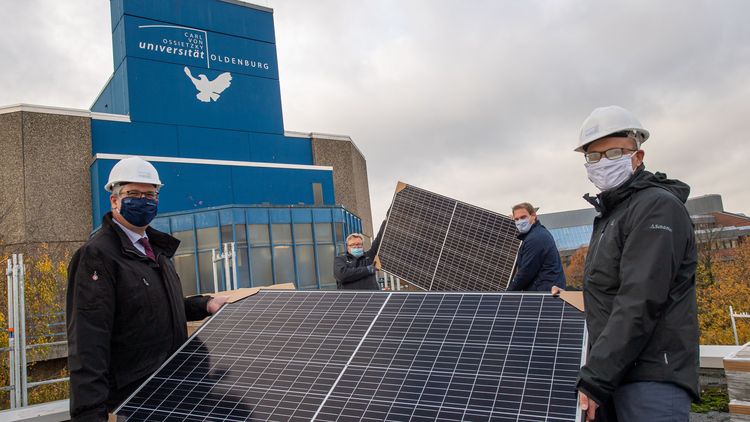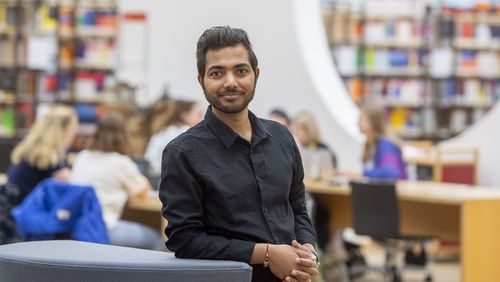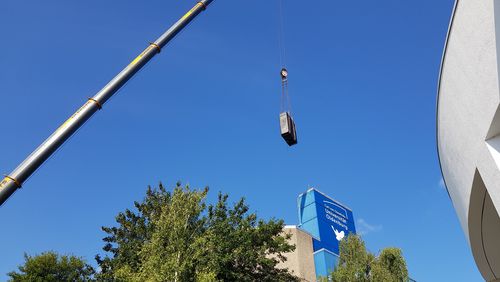The number of photovoltaic systems at the university is growing: more modules at the sports centre and the lecture hall centre will soon be producing environmentally friendly electricity and contribute about five percent to the overall electricity needs.
It is already shimmering blue on many roofs of the university. Now even more buildings on the Haarentor campus are being refined with shiny photovoltaic modules. In addition to the flat roof of the lecture hall centre, new photovoltaic panels are currently being installed on the top of the sports centre and the language centre. They will generate around 420,000 kilowatt hours of electricity per year once they are ready for operation in March 2021. The electricity output corresponds to the annual consumption of more than one hundred four-person households.
The installation of the new photovoltaic system on the Campus Haarentor is already the third construction phase in terms of solar energy: between 2017 and 2019, the university installed a total of twelve photovoltaic systems with a peak output of 500 kilowatts. Work started in 2017 on the Haarentor campus with the library, the "bridge" connecting the university buildings, the domed roof of the lecture hall centre and other buildings. This was followed in 2019 by the Wechloy Campus, where parts of the main building and the NeSSy research building are now equipped with photovoltaic modules. The European Regional Development Fund (ERDF) bore half of the costs of almost 615,000 euros; the Ministry of Science of Lower Saxony funded the other half.
Reducing CO2 emissions by 540 tonnes
With the new systems, the university can now almost double the amount of electricity it generates itself: in future, the peak output of all photovoltaic systems installed at the University of Oldenburg will be almost 1,000 kilowatts. This corresponds to an energy yield of around 870,000 kilowatt hours of electricity per year – equivalent to a reduction in CO2 emissions by 540 tonnes. The share of photovoltaically generated electricity in the university's total electricity consumption will thus increase to five percent in the future.
"This puts us in a very good position in comparison with other universities; we have one of the largest plants in Lower Saxony," reports Meik Möllers, head of the division facility management. The university is financing the current increase through reserve management. All photovoltaic systems together are expected to reduce the university's energy costs by around 150,000 euros per year.
The largest suitable roof areas on both Campus Haarentor and Campus Wechloy are now covered by the shiny panels. But the expansion of photovoltaics has not yet been completed. Some smaller roofs could be retrofitted after refurbishment, reports project manager Alexander Koch, and: "For new buildings, we plan to include the solar systems right away"






